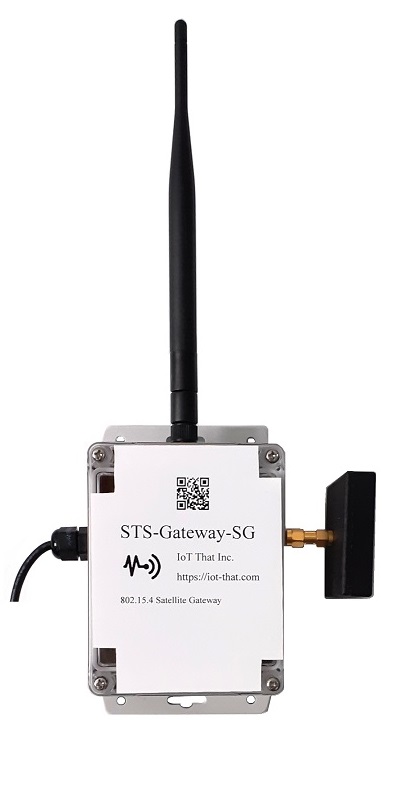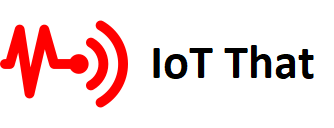STS-Gateway-SG - Streamline Your IoT Solutions
STS-Gateway-SG
STS-Gateway-SG is a Wireless Sensor - Satellite Gateway and part of our IoT ecosystem and artificial intelligence IoT Platform. Iridium is the only satellite network that allows transmission of information from any point on Earth; other networks have no coverage in the polar regions and have intermittent or no coverage in other marine and land areas. Iridium has 66 satellites in orbit around the Earth, allowing coverage anywhere on Earth 24 hours a day, seven days a week. No other satellite network has truly global coverage. Messages sent via Iridium take just seconds to reach our IoT Platform.
Iridium operates in the microwave L-band, meaning successful data transmission relies on an unobstructed line-of-sight satellite view. Satellites travel quite quickly - from horizon to horizon in under 10 minutes - so with sensible application design, it is possible to transmit data, even with a heavily obstructed view of the sky.
Sub-1Ghz technology is becoming one of the chief driving forces behind the Internet of Things (IoT). The main benefits of this technology are:
Low power consumption has always been the predominant feature of the sub 1GHz applications, with new technologies consuming in sleep mode of less than 1uA. The consumption of this device is 5.5mA when receiving and 23.5mA when transmitting at +14dBm (13.4mA at +10dBm). In sleep mode, the consumption is 0.6µA (microamps).
Long Range has become a reality because, with this new technology, you can reach distances of several kilometers. In addition, by occupying the ISM bands in the wireless spectrum below 1 GHz, this communication avoids the much more crowded band at 2.4 GHz, where Wi-Fi, Bluetooth, Zigbee, and other wireless protocols operate. The sensitivity parameter is -110 dBm at data rates of 50 kbps and down to -121 dBm when the data rate is 5 kbps. Interference from other wireless communications can be overcome with 90dB of blocking. The RF output power levels can reach up to +14 dBm. All this ensures robust signaling for long-range communications.
STS-Gateway-SG uses 802.15.4 Stack-based star network consisting of two types of logical devices: the PAN-Coordinator and the network devices, e.g., the Collector and Sensor applications, respectively.
STS-Gateway-SG Board

Features
- Powered Outdoors by Harvesting Natural Light
- 2000 mAh Lithium-Ion Polymer Battery
- High Efficiency 6 Watt Mono-crystalline Solar Panel
- USB-Serial Command Line Interface
- The network is opened easily with the touch of a magnet
- Sensor data is secured using AES-256-CBC-MAC
- Connects to the Internet via Iridium Satellites
- Low latency Iridium Short Burst Data
- Constellation of 66 Low-Earth Orbit (LEO) mobile satellites
- Highly-reliable satellite communications from pole to pole
Environmental
- Plastic, Polycarbonate
- IP65 Rated Enclosure, NEMA 1,2,4,4X,12,13, UL-508
- Dust Tight, Water Tight
- Color Gray, Clear Cover
- Ratings IP66, IP68, NEMA 4X, NEMA 6P
- Material Flammability Rating UL94 5VA, UL94 V-0
- Operating Temperature: -40 ℃ to 65 ℃, non-condensing
- Secure – Choose your level of protection: pad-lockable, tamper screw, or tamper tag capable
- Frequency Friendly –Extremely favorable for sending and receiving wireless signals
- Restriction of Hazardous Substances (RoHS), Directive 2002/95/EC
Certifications
- FCC ID: Q639603N
- North America 915 MHz, FCC ID: 2ANH5RC-CC1312R-915, Part 15C
- Europe 868 MHz, CE Certified, Radio Equipment Directive 2014/53/EU
Mechanical
- Dimensions 5.709" L x 3.597" W x 2.165" H (145mm x 91.4mm x 55mm)
- Mounting Flange
- Mechanical View
Included
- Brackets for 2-inch pole mount
- High Efficiency 6 Watt Mono-crystalline Solar Panel
- Solar Panel Bracket for 2-inch pole mount
- Plastic, Polycarbonate enclosure
About Short Burst Data (SBD)
SBD is a bandwidth-limited messaging system capable of transmitting packets of up to 340 bytes and receiving 270 bytes. SBD is suitable for applications that regularly send or receive small amounts of information, typically tracking, telemetry, system control, and monitoring applications. It is unsuitable if very low latency is required or if the data to be transmitted is larger than a few thousand bytes. Sending images can be done if the image is relatively small and the frequency is only once a day. With a good view of the sky, it is possible to send/receive approximately once every 10 seconds.
ShippingCA$20

